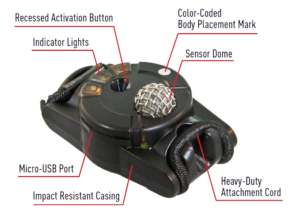DOD Ends Battlefield Blast Gauge Program

By Debbie Gregory.
The Pentagon’s blast gauge program has been put on hold.
Thousands of combat troops in Afghanistan were outfitted with monitoring gauges that were meant to show whether service members had been close enough to an explosion to have sustained a concussion, or mild traumatic brain injury. One of the major problems was that the gauges failed to show how much blast exposure is too much
The small wearable devices did produce evidence that many service members had been exposed to worrisome levels of blast pressure simply by being near a heavy weapon when it’s fired.
“The majority of exposures were not from improvised explosive devices, as you might expect,” says David Borkholder, an engineering professor at the Rochester Institute of Technology and the founder of BlackBox Biometrics, which makes the blast gauges. Instead, the culprit was usually “blast-intensive weapons systems” like recoilless rifles, shoulder-fired rockets, artillery and mortars, according to Borkholder.
Firing something like a recoilless rifle generates a powerful pressure wave both in front of and behind the weapon. Those pressure waves are usually less intense than those from a bomb. But exposures are far more common, and not limited to the battlefield.
The decision to warehouse the blast gauges is “a huge mistake,” says retired Gen. Peter Chiarelli, who was the Army’s vice chief of staff before retiring in 2012 and is now the chief executive officer of One Mind, a nonprofit focused on brain illness and injury.
The blast gauges are about the size of a quarter, and troops wear three of them on their helmets and upper bodies. The gauges contain sensors that measure overpressure, the sudden increase in air pressure caused by an explosion.
An overpressure of just 5 pounds per square inch can burst an eardrum. One-hundred PSI can be fatal. And somewhere in between is probably where most concussions occur.
The Department of Defense says it’s committed to determining the risks from overpressure exposure, both in combat and in training. It’s also testing a new generation of blast gauges that are more sensitive and easier to maintain.
But the military has made no commitment to deploying those gauges.
Military Connection salutes and proudly serves veterans and service members in the Army, Navy, Air Force, Marines, Coast Guard, Guard and Reserve, and their families.

















